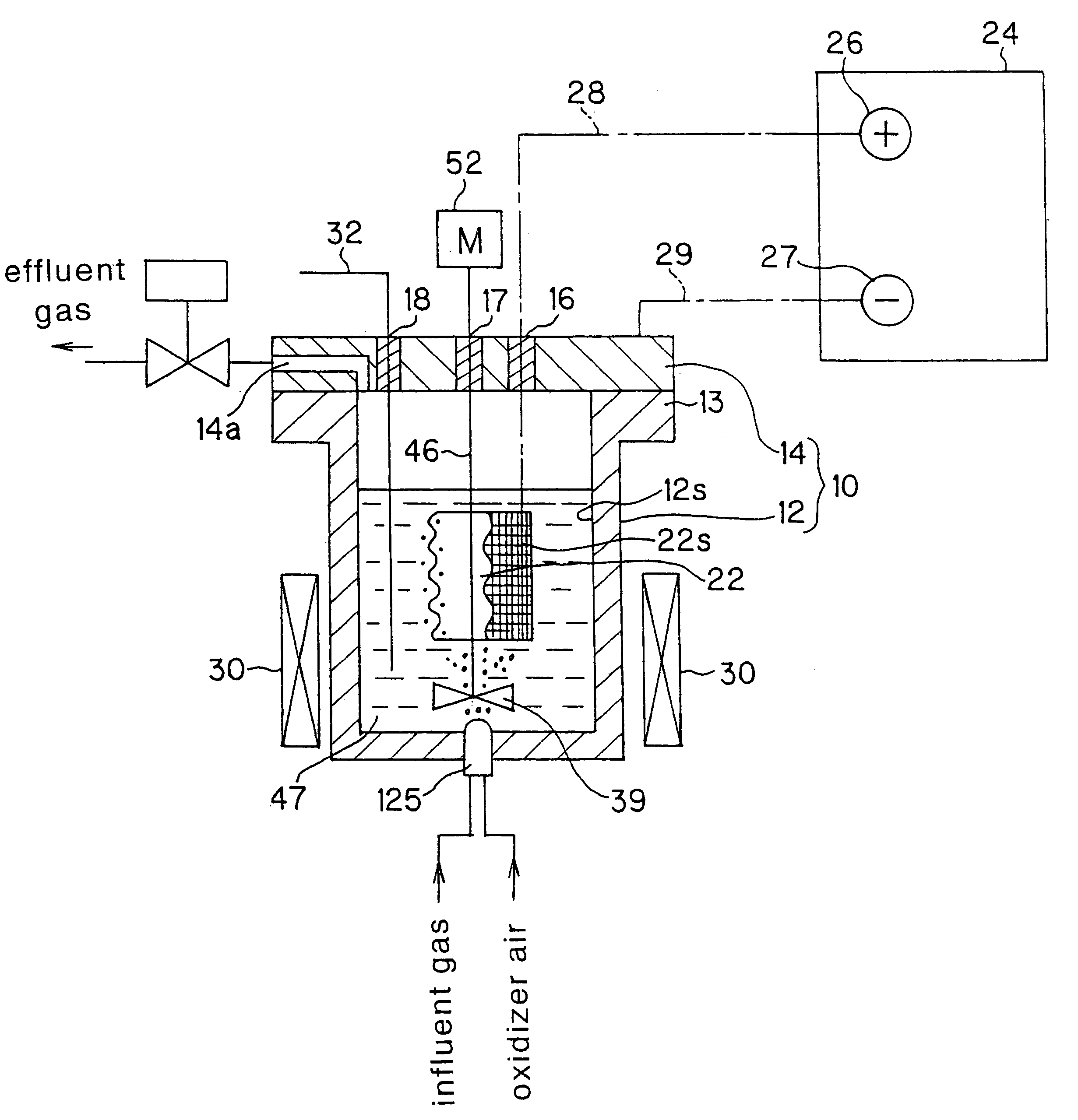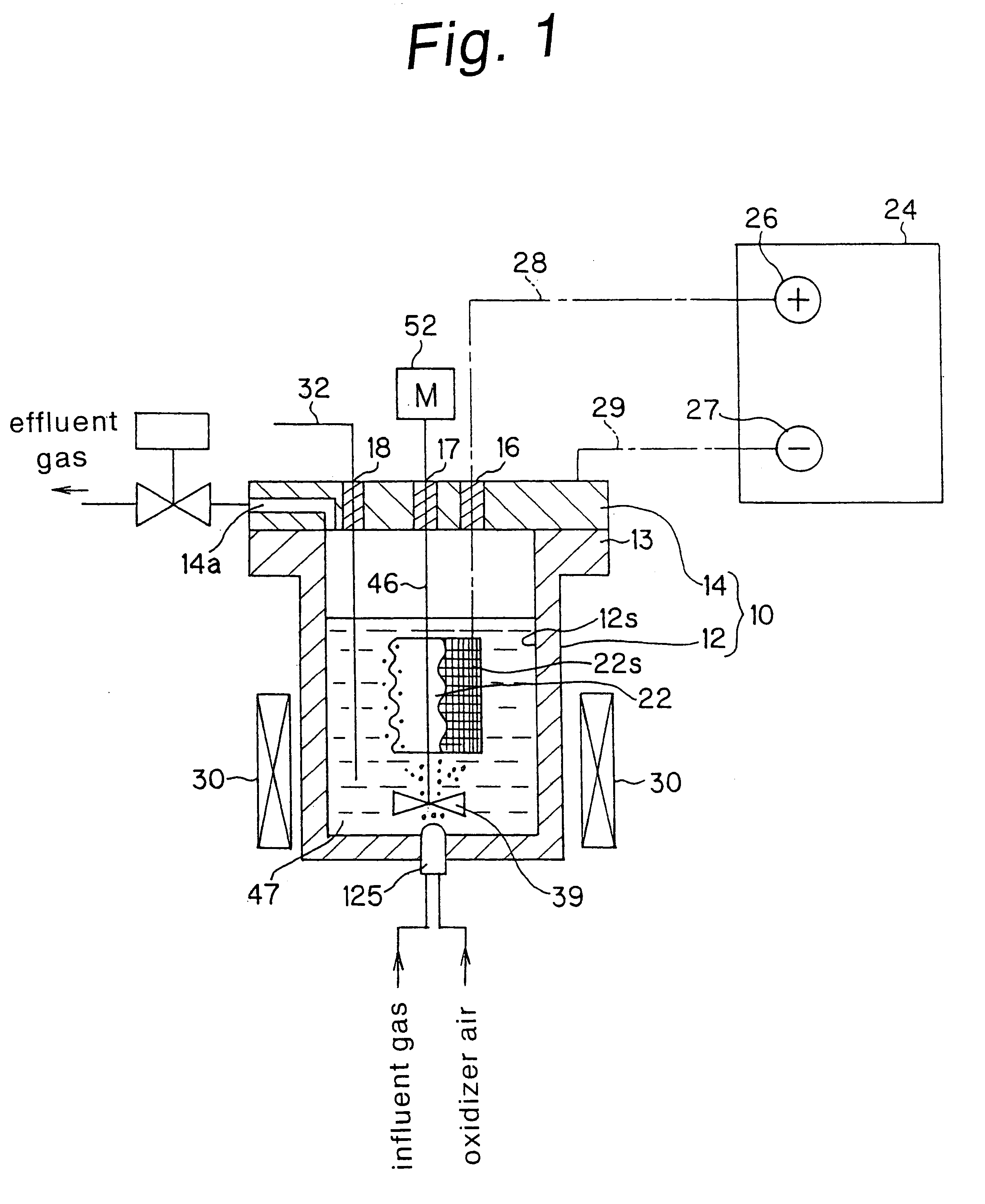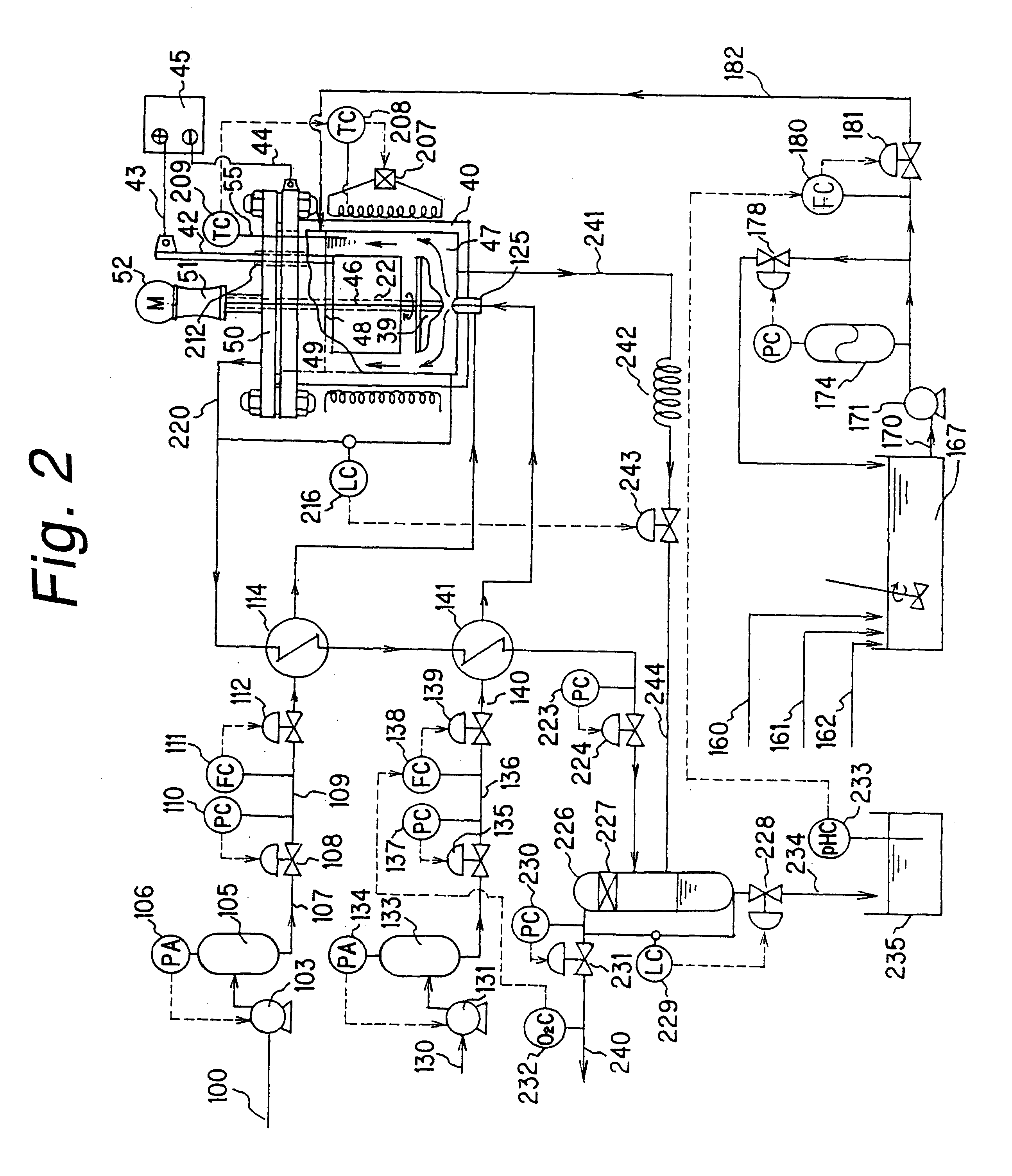Method and apparatus for treatment of gas by hydrothermal electrolysis
a hydrothermal electrolysis and gas treatment technology, applied in water treatment multi-stage treatments, crystal growth processes, disinfection, etc., can solve the problems of catalyst poisoning, catalyst poisoning, and gas phase catalytic oxidation suffering from local temperature ris
- Summary
- Abstract
- Description
- Claims
- Application Information
AI Technical Summary
Benefits of technology
Problems solved by technology
Method used
Image
Examples
example 1
The hydrothermal electrolytic reactor shown in FIG. 2 was used to treat a mixed gas containing 50 ppm hydrogen sulfide and 50 ppm methyl mercaptan (nitrogen balance). The flow rate of the mixed gas was 0.5 L / min, and the flow rate of the oxidizer air was also 0.5 L / min. The aqueous medium used was a 0.5 wt % aqueous NaCl solution. The aqueous medium was adjusted to pH 10 with NaOH. The inflow rate of the aqueous medium was set at 1 mL / min. The reactor temperature was set at 250.degree. C. and the reaction pressure was set at 7 MPa. After the reaction temperature and the reaction pressure reached predetermined values, a 12 A dc source was applied across the reactor and the insertion electrode. The reactor body served as a cathode and the insertion electrode served as an anode. Both hydrogen sulfide and methyl mercaptan levels measured with a detector tube at steady state were 1 ppm or less and odorless.
PUM
| Property | Measurement | Unit |
|---|---|---|
| Temperature | aaaaa | aaaaa |
| Angle | aaaaa | aaaaa |
| Temperature | aaaaa | aaaaa |
Abstract
Description
Claims
Application Information
 Login to View More
Login to View More - R&D
- Intellectual Property
- Life Sciences
- Materials
- Tech Scout
- Unparalleled Data Quality
- Higher Quality Content
- 60% Fewer Hallucinations
Browse by: Latest US Patents, China's latest patents, Technical Efficacy Thesaurus, Application Domain, Technology Topic, Popular Technical Reports.
© 2025 PatSnap. All rights reserved.Legal|Privacy policy|Modern Slavery Act Transparency Statement|Sitemap|About US| Contact US: help@patsnap.com



